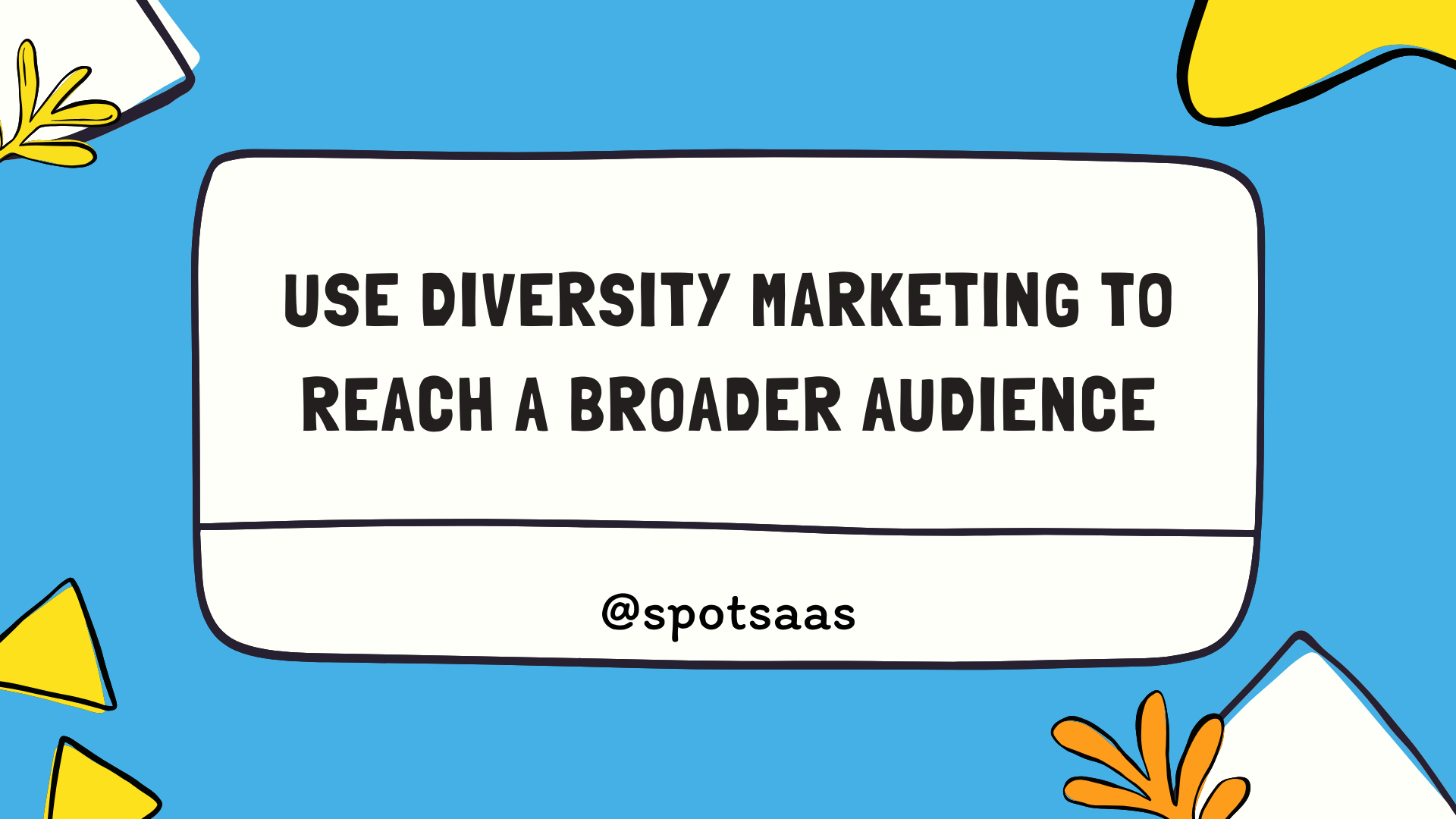Ever had that creeping sensation that your company’s marketing efforts are just not hitting the mark? Not reaching as vast an audience as you’d like? Believe me, I’ve walked in those shoes.
It was through exploration and research, that I stumbled upon a solution – embracing diversity in our strategies can pave the path to fresh opportunities. This blog is your friendly guide to understanding Diversity Marketing; delving into what it stands for, its advantages and drawbacks, and how seamlessly it can be woven into your current strategy for enhanced outreach.
Key Takeaways
- Diversity marketing is a powerful strategy that helps businesses connect with consumers from various backgrounds, creating a more inclusive and representative brand.
- It leads to increased business opportunities, positive brand perception, and customer retention.
- Representation in imagery, website accessibility, language usage, and empowering engagement are key elements of incorporating diversity marketing into your strategy.
Understanding Diversity Marketing
Diversity marketing is a crucial aspect of any successful marketing strategy, as it involves actively reaching out and connecting with consumers from various backgrounds to create a more inclusive and representative brand.
What is Diversity Marketing?
Diversity marketing is a powerful strategy businesses employ to connect with various cultural sectors within the overall market. It taps into the unique trends, customs, and preferences of specific groups to create more meaningful and personalized messages.
This practice examines factors like race or ethnicity in its approach, employing a variety of digital tools for reaching diverse audiences effectively. The goal? To draw interest from potential consumers who might not have felt addressed by other less inclusive advertising methods before! Companies that master this technique often enjoy boosted engagement rates along with an enhanced brand perception among all target audiences.
Why does it matter?
In the world of marketing, diversity matters as it opens up business opportunities, enhances brand perception and fosters customer retention. Embracing a diverse approach in our advertising and marketing materials draws insights from different perspectives thus allowing us to understand the specific wants and dislikes of our varied target audience.
Companies using this strategy experience more positive market reception across all audiences because inclusivity resonates with everyone. People feel connected when they see themselves represented in advertisements – these connections build loyalty and trust.
In fact, roughly 40% of Americans are likely to put their faith in brands which show diversity in their promotional campaigns. It’s essential for us not to just observe cultural diversity but incorporate it into our branding – this creates an inclusive image that celebrates various backgrounds while reaching a broader demographic sector.
Pros and Cons of Diversity Marketing
Pros of diversity marketing include increased business opportunities, positive brand perception, and customer retention. Cons include higher costs, delicacy in addressing the subject, and the challenge of maintaining brand essence.
| Aspect | Pros | Cons |
|---|---|---|
| Business Opportunities | Reaches new markets and cultural groups, creating a larger customer base. | |
| Brand Perception | 40% of Americans trust brands with diverse advertising more. | |
| Customer Retention | Makes diverse customers feel valued, leading to higher retention rates. | |
| Costs | May require additional resources and investments. | |
| Subject Sensitivity | Diversity is sensitive; missteps can damage reputation. | |
| Brand Essence | Challenging to balance inclusivity and brand identity. |
Incorporating Diversity Marketing Into Your Strategy
To effectively incorporate diversity marketing into your strategy, consider representation in imagery, ensuring website accessibility for all users, carefully choosing language usage to be inclusive and empowering engagement with diverse communities.
Representation in imagery
Representation in imagery is a crucial aspect of diversity marketing. By featuring diverse individuals in advertisements and marketing materials, brands can connect with a broader audience and demonstrate inclusivity.
Research shows that consumers are more likely to trust brands with diverse advertising, making representation an impactful strategy for attracting customers. Embracing diversity in imagery helps create a sense of inclusion for all people and contributes to building better connections with audiences.
It is an essential component of diversity marketing, enabling companies to reach a wider range of consumers and enhance their brand perception.
Website Accessibility
Website accessibility is a crucial aspect of diversity marketing. It ensures that individuals of all abilities can access and navigate your website effectively. This inclusivity not only increases your potential customer base but also aligns with the values of a diverse society.
Studies show that 71% of users with disabilities will leave a website if it’s difficult to use, highlighting the importance of making your site accessible. By incorporating features such as alt text for images, clear headings, and keyboard navigation options, you can make your website more inclusive and welcoming to everyone.
Language usage
Language usage plays a crucial role in diversity marketing. It’s important to use inclusive and respectful language that resonates with your target audience. By using language that is culturally sensitive, you can avoid alienating potential customers and instead foster a sense of inclusivity.
Studies have shown that consumers are more likely to trust brands that use diverse and inclusive messaging in their marketing materials. So, make sure to carefully consider the words and phrases you use to ensure they align with your brand values and appeal to a broad range of people.
Empowering engagement
To empower engagement, it is crucial to create marketing strategies that resonate with diverse audiences. This involves utilizing digital tools and platforms to foster inclusive messaging that speaks directly to the interests and needs of different communities.
By incorporating diversity in advertising and marketing materials, brands can demonstrate a commitment to inclusivity while appealing to a broader consumer base. Additionally, actively seeking feedback from customers and leveraging their insights can help boost engagement and ensure ongoing relevance in an ever-changing market.
It’s important to remember that empowering engagement requires continuous effort and adaptability, as well as a genuine commitment to understanding and embracing the diversity of your target audience.
As part of our strategy for empowering engagement, we recognize the value of catering to multicultural markets. We understand that diverse demographics have unique preferences when it comes to products or services, so we strive to create advertising campaigns that accurately depict their experiences and resonate with their cultural backgrounds.
By doing so, we not only build trust within these communities but also tap into new business opportunities. Our goal is not just limited representation; rather it extends towards creating authentic connections by genuinely valuing diversity in all aspects of our marketing efforts.
Conclusion
Incorporating diversity marketing into your strategy can help your business reach a broader audience and boost customer engagement. By embracing inclusivity in your messaging, imagery, and language usage, you can create a positive brand perception and build better connections with diverse audiences.
Don’t miss out on the opportunities that diversity marketing presents in today’s changing landscape.
FAQs
1. What is diversity marketing?
Diversity marketing is a strategy that aims to reach and engage with a wide range of different audiences, including individuals from various ethnic backgrounds, genders, ages, and cultural identities.
2. Why is diversity marketing important?
Diversity marketing is important because it allows businesses to connect with a broader audience, promote inclusivity, foster brand loyalty among diverse communities, and tap into new market segments for growth opportunities.
3. How can I implement diversity marketing in my business?
To implement diversity marketing in your business, you can start by conducting market research to understand the needs and preferences of diverse consumer groups. Then tailor your advertising campaigns and messaging to be inclusive and representative of these diverse audiences.
4. Can diversity marketing benefit my bottom line?
Yes, implementing diversity marketing strategies can have positive impacts on your bottom line as it allows you to attract more customers from different demographics who may not have otherwise engaged with your brand.
5. Are there any challenges or risks associated with diversity marketing?
Yes, there are potential challenges and risks when implementing diversity marketing strategies such as unintentional misrepresentation or cultural appropriation. It’s important to educate yourself about different cultures and consult experts or hire professionals when needed to ensure authenticity and avoid potential backlash.




